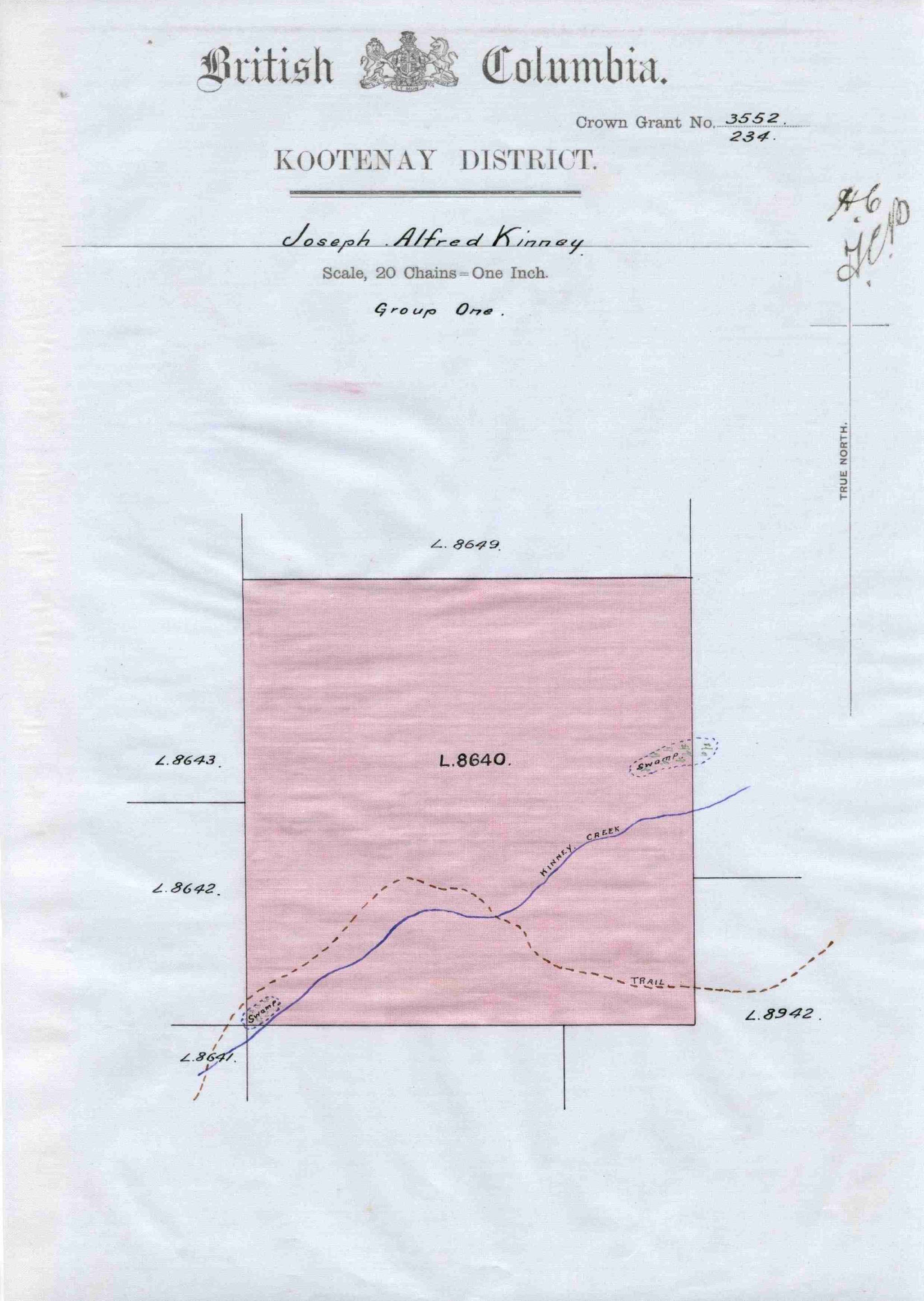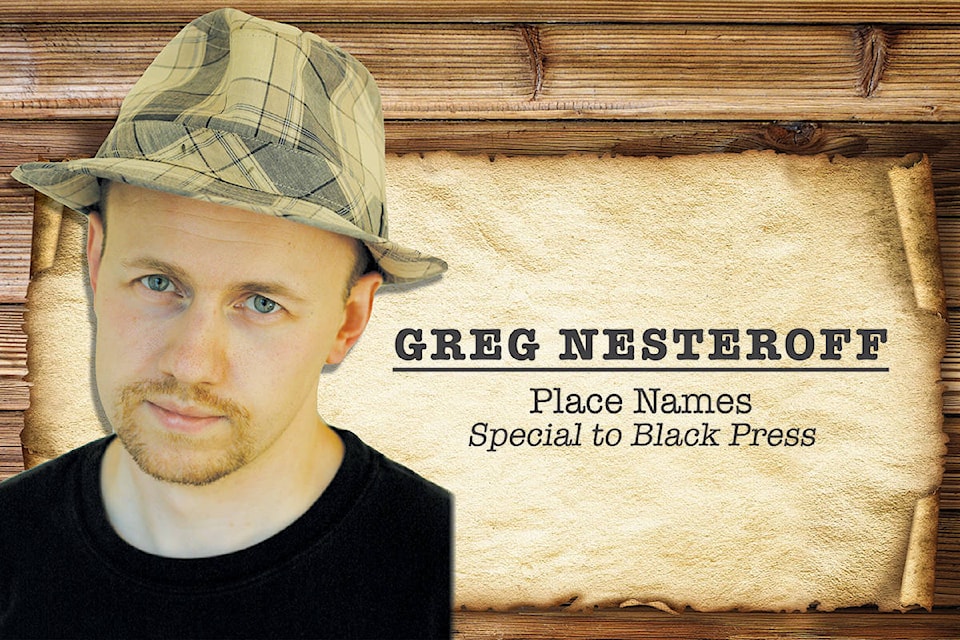Two hundred eighty-fourth in a series on West Kootenay/Boundary place names
Last week we started looking at the origins of Castlegar’s neighbourhood names, leaving off with subdivisions at the city’s south end, in what was formerly the Town of Kinnaird.
Among the newer such subdivisions:
• Emerald Green, perhaps a nod to Castlegar’s Irish roots, is centred around Emerald Crescent and part of 37th Street.
• Southridge takes in Southridge Drive, Windsor Place, and 14th Avenue and another part of 37th.
• Grandview Heights is a seniors community established in the early 2000s around Grandview Drive, Rosewood Lane, and 16th Avenue.
• Twin Rivers Estates, on the east side of Highway 22, includes Williston, Powell, and Toba roads, and a portion of 5th Avenue.
Castlegar also has several suburbs outside of city limits, including Brilliant, Robson, Raspberry, Ootischenia, Fairview, and Pass Creek. The airport lands were carved out of Ootischenia and added to city limits in a boundary expansion. The city’s western boundary takes in the Celgar and Interfor mills, including areas formerly known as Robson West and Westley.
Blueberry Creek, previously covered in this series, was added to city limits in 2004.
KINNAIRD, REVISITED AGAIN
Speaking of Kinnaird, its earliest use has been pushed back several more months.
The Nelson Daily News of March 26, 1912 reported: “[W]ork has already commenced on the bridge crossing the Kootenay river, which, when completed, will allow the Doukhobors uninterrupted access to their Pass Valley and Crescent Valley lands from Kinnaird and Brilliant.”
Kinnaird appears to have been added to the CPR timetable that year because Rossland lumberman J.S. Deschamps built a sawmill there.
As previously detailed in this series, the theory that it was named for Arthur Fitzgerald Kinnaird, the 11th Lord Kinnaird, seems improbable. A more likely namesake is Frank Kinert (1860-1915), listed in the 1904 and 1905 civic directories as a CPR brakeman in Castlegar.
Kinert is a spelling variant of Kinnaird; the Kinert clan came from the barony of Kinnaird, and some of Frank’s relatives used the spelling Kinard.
It’s also been suggested the name might be derived from “Kinny Yard,” combining the name of a CPR employee with the railyard where he worked. Conductor Alfred Joseph Kinney (1874-1936) did live in Castlegar, and a similar origin led to the naming of a Spokane neighbourhood. Hillyard was christened for the railyard it was home to plus Great Northern Railway head James J. Hill. (Hill was reportedly annoyed at the name.)
Whether he had anything to do with the naming of Kinnaird, A.J. Kinney is remembered in Kinney Creek, a tributary of Pass Creek. It appeared on the sketch for a Crown grant he was issued on Feb. 11, 1909.
GENELLE, FARRON, NELWAY, AND KOKANEE REVISITED
Several other places have had their earliest uses pushed back, thanks to the recent digitization of old newspapers.
• Previously the first known mention of Genelle was from the 1909 BC civic directory. But the Calgary Herald of June 7, 1904 mentioned it on a list of Kootenay railway points subject to a new tarriff. Genelle was named after the lumbering family who came to BC from Ontario in 1884 and operated sawmills throughout the West Kootenay/Boundary.
• Farron is the spot on the Columbia and Western Railway closest to the 1924 train explosion that killed Doukhobor leader Peter (Lordly) Verigin and eight others.
Previously the earliest known use was from the Nelson Tribune of March 19, 1900. It appears to have been added to the timetable about three weeks earlier. The Vancouver Province of March 1 included it on a list of destinations.
But the name’s origin remains elusive; one source claims it was “named for a Columbia and Western Railway construction engineer.” If so, his identity is a mystery.
• Nelway, the border crossing south of Salmo, opened in 1923, but the name wasn’t adopted right away. The previous earliest known mention was in the Nelson Daily News of Aug. 2, 1926. An earlier mention shows up in a list of border crossings in The Vancouver Sun of April 10 of that year. The name is a contraction of “Nelson and Spokane highway.”
• Best of all: a new earliest mention of Kokanee, and a novel spelling to boot.
Where previously the first known use was from 1895 (spelled Ko-ko-nee), the Victoria Daily Times of June 15, 1892 reported: “Contractors David Black and Neil McLean started for the Slocan from the West Arm, up Cocanie Creek …”
Cocanie, or Kokanee, is derived from kekeni, the Sinixt term for salmon.

